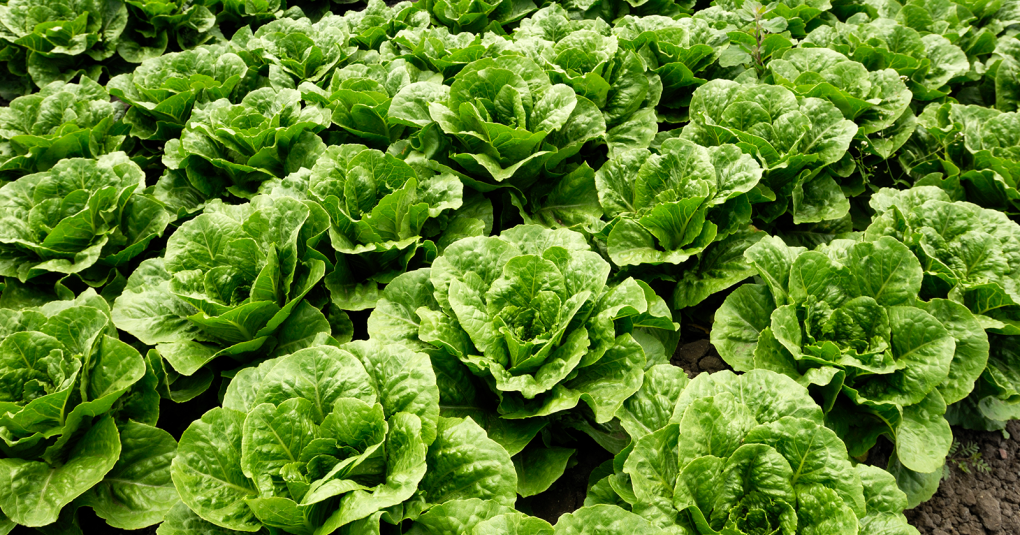Mar 5, 2020FDA outlines 2020 Action Plan to help advance safety of leafy greens
Fresh leafy greens are among the most widely consumed vegetables and an important part of an overall healthy diet. The U.S. Food and Drug Administration is committed to working with the produce industry and government partners to help keep leafy greens safe for Americans.
While millions of servings of leafy greens are consumed safely every day, this produce commodity has been too often implicated in outbreaks of foodborne illness. These include recurring outbreaks of E. coli 0157:H7 infections tied to consumption of romaine lettuce, which is very popular in this country.
We believe one foodborne illness outbreak is one too many. The FDA is committed to doing more.

Today we are releasing the 2020 Leafy Greens STEC Action Plan, which spells out the actions the FDA plans to take this year in the areas of prevention, response and addressing knowledge gaps. STEC stands for Shiga-toxin producing E. coli, which can cause potentially life-threatening illnesses. The most common STEC, E. coli O157:H7, is most often associated with outbreaks.
Food safety is a shared responsibility that involves food producers, distributors, manufacturers, retailers and regulators. We’ve previously called on the leafy green industry to do more, and meeting our own responsibility involves collaboration with state partners on education, training and inspections. This plan is designed to help foster a more urgent, collaborative and action-oriented approach.
Prevention, response and knowledge gaps
In the area of prevention, we will be taking further steps to implement the FDA Food Safety Modernization Act (FSMA) Produce Safety Rule that established science-based minimum standards for the safe growing, harvesting, packing, and holding of produce. Areas covered by these standards include biological soil amendments; animal intrusion; hygiene; and equipment, tools and buildings. The major compliance dates for very small businesses arrived in January, and 2020 marks the second year of conducting routine Produce Safety Rule inspections for other covered farms, other than for sprouts operations, which had earlier compliance dates.

Our prevention-focused plans in the leafy greens sector include providing education and technical assistance to industry and other stakeholders, with greater emphasis on the potential impact of adjacent land uses and continued emphasis on the importance of agricultural water quality. We also hope to issue proposed revisions to FSMA’s agricultural water requirements, for covered produce other than sprouts, in 2020. We extended the compliance dates for those provisions to address feedback about practical challenges in implementing the requirements.
In the area of response, we will soon be publishing an investigation report on three outbreaks of E. coli O157:H7 infections tied to romaine lettuce and leafy greens between November and December 2019. Each was tied to the Salinas Valley in California. We will also be conducting follow-up surveillance of fields in that region during this fall’s growing/harvest season.
While we must act to help prevent and respond to STEC outbreaks with current knowledge, gaps remain in our understanding of how environmental pathogens, including STEC, can contaminate produce. Most leafy greens are grown outdoors, where they are exposed to soil, animals, and water, all of which can be a source of contamination. Developing new science to learn how pathogens survive and move through the environment can help us protect these foods that are mostly eaten without cooking or processing to eliminate microbial hazards. The FDA is already working with experts in state government, cooperative extension and academia to better understand the ecology of pathogens in the Yuma, Arizona, growing region. Discussions have been initiated to conduct the same research in other leafy greens growing regions.
The New Era of Smarter Food Safety initiative aims to foster rapid traceback of contaminated foods to their source and enhance the analysis of data streams to inform prevention efforts.
Affirming FDA’s commitment
As public health officials, we are concerned by these recurring outbreaks and we believe all involved with the production and sale of fresh leafy greens can do better. As people who have children of our own, we are heartbroken about the families whose lives have been forever changed by these illnesses.
We have an unwavering commitment to protecting the health of the American public. The 2020 Leafy Greens STEC Action Plan demonstrates how we will honor that commitment. We are laser-focused on improving our prevention, response and research efforts with a multi-faceted approach to help keep leafy greens safe for generations to come.
– Dr. Stephen M. Hahn, Commissioner of Food and Drugs and Frank Yiannas, Deputy Commissioner for Food Policy and Response
Leafy greens’ groups reacts
“The leafy greens farming communities in California and Arizona welcome any action that helps prevent future foodborne illness outbreaks associated with our products. We value the support of the U.S. Food and Drug Administration as detailed in its 2020 Leafy Greens Action Plan released today.
FDA’s Action Plan lays out a pathway forward built on stronger collaboration and cooperation among the grower community, California and Arizona Leafy Greens Marketing Agreements (LGMA’s), researchers and a host of state and national government agencies. The LGMA applauds the efforts of Assistant Commissioner Frank Yiannas and his colleagues to make the process inclusive and in partnership with all stakeholders in the supply chain from field to store, restaurant and consumers.
At its core, the LGMA is a partnership with government. We operate with oversight from the state departments of agriculture in California and Arizona. Our strength comes from the comprehensive audits conducted by state government employees. These audits, which include over 150 required food safety checkpoints, work to ensure a culture of food safety is adopted throughout the industry.
Ultimately, LGMA is the entity charged with establishing and adapting food safety standards used in the production of leafy greens. We want these standards to be as strong as possible. Any input provided by the FDA including product testing data, research and information gathered through outbreak investigations is extremely useful as we work to improve our systems.
LGMA required food safety practices are already the most stringent for any produce item in the world. Specifically, the LGMA program recently strengthened water quality standards well beyond what is contained in current federal regulations under the Produce Safety Rule. These new standards are currently being enforced by government agencies in both California and Arizona. The LGMA programs are continuing to further improve water standards and they are also looking at other practices concerning adjacent land use, compost and several other areas noted in the FDA Action Plan.
In addition to our strong partnership with government, the LGMA is working cooperatively with other entities throughout the produce industry. Everyone is focused on how we can make leafy greens safer so that consumers are protected.
A list of ongoing actions being taken by industry is can be found here.
Produce Marketing Association responds
In response to the FDA’s release of the Leafy Greens Action Plan, Max Teplitski, PMA’s chief science officer, has provided the following statement.
“Today, U.S. Food & Drug Administration (FDA) released a Leafy Greens Action Plan aimed at defining a set of preventive, responsive and evaluative measures to promote microbiological safety of leafy greens. Produce Marketing Association shares FDA’s unwavering commitment to ensuring that fresh fruits and vegetables are produced, processed, and distributed with the best science-based standards of care which ensure the least contribution to the burden to foodborne illness and continue to be a vital component of healthy diets.
We support efforts to provide end-to-end traceability and establish uniform traceability requirements, invest in a systems approach and critical path analysis of adjacent land risk and verifiable interventions. It goes without saying that many PMA members have already made exemplary voluntary efforts to commit to product traceability, and PMA itself took steps to promote these efforts through initiating the sunsetting of the use of generic UPC codes and providing timely education, training and support opportunities for our members and partners.
We applaud FDA’s determination to continue to engage in conversations – in real time – with all stakeholders at critical times. PMA is committed to delineating the vision and opportunities for re-engaging and incentivizing the industry towards building a mutually beneficial data bank for sharing and analyzing data. FDA’s commitment to provide a timely analysis of the outbreak investigation reports to support a roadmap for prevention is highly welcomed. Further, we underscore the importance of collaboration in identifying opportunities for sustained longitudinal surveillance and capacity building for timely root-cause analyses. Clearly, timely root-cause analyses and opportunities to fill knowledge gaps, outside of immediate outbreak events, can only be successful when all parties share data. Mechanisms must be put in place to facilitate data collection and sharing, and development of novel tools for predictive modeling to promote learning. In the process, we must engender trust, ensure protection of proprietary information and recognize efforts of those committed to participating in improving public health protection.
The action plan contains a number of tactics, and it will be critical to work collaboratively to identify metrics for the efforts that the industry and our public health agency research and regulatory partners can commit to as well as resources needed to achieve our common goal of minimizing risks associated with the consumption of leafy greens and engendering trust in foods.”

















